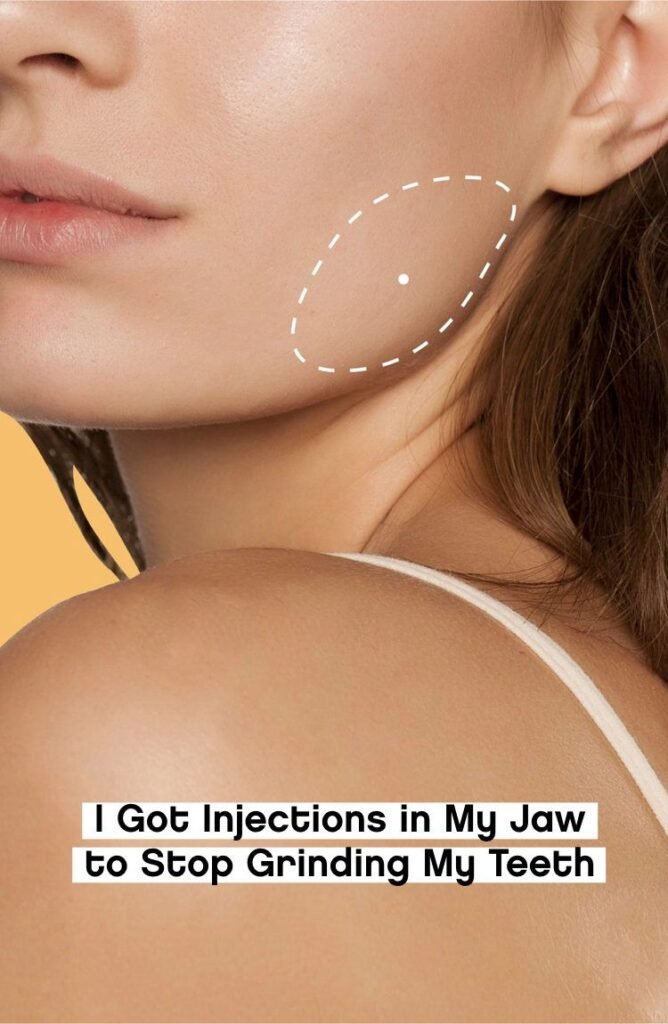If you have suffered from the persistent throbbing of jaw pain, the incessant clicking of a jaw joint, or the pulsating headache radiating from your temples, you are acquainted with TMJ disorders. Temporomandibular Joint (TMJ) dysfunction affects the quality of life significantly and can turn simple activities like eating, speaking, and even smiling into a constant struggle.
Many practitioners offer traditional methods of treatment, but they often do not work. There is, however, one method that is gaining popularity due to its non-invasive nature: Botox for TMJ near me. This groundbreaking therapy can offer profound relief from jaw aches, headaches, and other associated aches, helping to restore comfort and function to your life.

Our goal is to put you in control. We will explain the details concerning Botox for TMJ near me, its mechanism, benefits, results to be expected from the procedure, and much more. Most importantly, we will provide you with the information needed to find a reputable injector in your vicinity for Botox for TMJ, making sure that you receive the best and safest treatment available. Your journey to relief starts here.
Understanding TMJ Disorders & Why Botox is a Solution
To truly appreciate the power of Botox for TMJ, it helps to understand the underlying condition.
What is TMJ/TMD?
The temporomandibular joints (TMJs) are the two joints connecting your jawbone to your skull, located just in front of each ear. These complex joints, along with surrounding muscles, ligaments, and discs, enable you to move your jaw up and down, side to side, and forward and back, allowing you to chew, speak, and yawn.

Temporomandibular Disorders (TMD), often simply referred to as “TMJ,” are conditions that cause pain and dysfunction in these joints and the muscles that control jaw movement. Common symptoms include
- Chronic pain or tenderness in your jaw, face, ear, or neck.
- Pain in one or both of the temporomandibular joints.
- Aching pain in and around your ear.
- Difficulty or discomfort while chewing.
- Clicking, popping, or grating sounds when you open or close your mouth.
- Locking of the joint, making it difficult to open or close your mouth.
- Headaches (often tension headaches) and even migraines.
- Bruxism (involuntary teeth grinding or clenching) often occurs during sleep.
When Traditional Treatments Fall Short:
Many individuals with TMJ pain initially explore conservative treatments such as:
- Over-the-counter pain relievers (NSAIDs).
- Mouthguards or splints to prevent teeth grinding.
- Heat or cold therapy.
- Physical therapy, massage, or stretching exercises.
- Stress management techniques.
- Diet modifications (soft foods).
While these methods can provide some relief, for many, the pain persists or is severe enough that they seek more targeted or powerful solutions. This is where Botox has become a game-changer.
The Role of Muscle Tension in TMJ Pain:
A significant contributor to TMJ pain and dysfunction is excessive muscle tension in the jaw. Muscles like the masseter (the large muscle that runs along your jawbone) and the temporalis (on the sides of your head) can become overworked and chronically tight due to stress, teeth grinding, or clenching. This constant tension leads to:
- Muscle fatigue and pain.
- Referred pain to the head, neck, and ears.
- Excessive force on the TMJ itself leads to joint inflammation and damage.
Botox directly addresses this root cause by targeting these overactive muscles, offering relief where other methods might have failed.
How Botox for TMJ Works: Mechanism & Procedure
Understanding the science and the process can help you feel more confident about choosing Botox for TMJ near you.

The Science Behind Botox for Jaw Pain:
Botox is a brand name for Botulinum Toxin Type A, a neurotoxin that works by temporarily blocking nerve signals to the muscles where it’s injected. When used for TMJ, it’s strategically injected into specific jaw muscles, most commonly the masseter (the primary chewing muscle) and sometimes the temporalis muscles.
By relaxing these overactive muscles, Botox achieves several therapeutic effects:
- Reduces Muscle Contraction: Lessens the intensity and frequency of involuntary jaw clenching and teeth grinding.
- Decreases Muscle Spasms: Alleviates the painful spasms that contribute to TMJ discomfort.
- Relieves Pressure on the Joint: By relaxing the muscles that pull on the TMJ, it reduces inflammation and wear on the joint.
- Reduces Pain Signaling: The relaxation effect can also indirectly diminish the pain signals sent to the brain.
The Treatment Procedure:
The process of receiving Botox for TMJ is generally quick, precise, and minimally invasive.
- Consultation & Assessment: Before any injections, a thorough consultation is essential. Your chosen provider will:
- Review your medical history and current medications.
- Discuss your specific TMJ symptoms, pain levels, and treatment goals.
- Conduct a physical examination of your jaw muscles and joint function.
- Determine the optimal injection sites and the precise dosage of Botox needed for your case.
- The Injection Process:
- The treatment area will be cleaned.
- Using a very fine needle, the Botox is injected directly into the identified overactive muscles. The number of injections and units will vary based on your needs.
- The entire injection process typically takes only 10-20 minutes.
- Most patients report only mild discomfort, often described as a slight pinch or sting, similar to a quick pinprick. Topical numbing cream or ice may be used to enhance comfort.
- Common Injection Sites: The primary sites for TMJ relief are usually the masseter muscles (on either side of the jaw) and the temporalis muscles (on the sides of the head). In some cases, if headaches are a primary symptom, injections might also be given in the frontalis or corrugator muscles (forehead/between brows).
- “Off-Label” Use Explanation: It’s important to understand that while Botox is FDA-approved for cosmetic use (e.g., wrinkles) and certain medical conditions (like chronic migraines), its use for TMJ disorders is considered “off-label.” This means that while medical professionals widely use it for this purpose due to strong evidence of effectiveness and safety, it hasn’t gone through the specific FDA approval process solely for TMJ. A reputable provider will always explain this distinction to you.
Benefits & Expected Results of Botox for TMJ Near Me
For many individuals suffering from chronic jaw pain, Botox for TMJ Near Me offers a renewed sense of relief and improved quality of life.
Significant Pain Relief:
The most sought-after benefit. Patients often experience a dramatic reduction in:
- Jaw pain and tenderness.
- Facial pain that may extend to the cheeks and ears.
- Muscle soreness is associated with chewing and clenching.
Reduction in Headaches & Migraines:
Chronic jaw tension and teeth grinding are common triggers for tension-type headaches and can exacerbate migraines. By relaxing the jaw muscles, Botox can significantly decrease the frequency and intensity of these headaches, providing relief that extends beyond the jaw.
Decreased Teeth Grinding (Bruxism) & Clenching:
Botox effectively weakens the muscles responsible for bruxism and clenching, reducing the damaging force exerted on teeth. This can protect your teeth from wear, fractures, and sensitivity, and alleviate associated morning headaches.
Improved Jaw Function:
Many patients report:
- Reduced clicking, popping, or grating sounds in the jaw joint.
- Increased range of motion and easier opening of the mouth.
- Less fatigue when chewing.
Potential Aesthetic Benefits (Jaw Slimming):
As a secondary effect of relaxing and reducing the bulk of the masseter muscles, some patients notice a subtle slimming or feminizing of the jawline. While not the primary goal for TMJ treatment, it can be a welcome bonus for those who experience masseter hypertrophy (enlarged jaw muscles) from chronic clenching.
Timeline for Results:
- Initial Pain Relief: Many patients begin to feel some relief within a few days to a week after treatment.
- Full Effect: The full therapeutic benefits, including muscle relaxation and maximal pain reduction, typically become apparent within 2-4 weeks post-injection.
Potential Side Effects & Risks of Botox for TMJ Near Me
While Botox for TMJ is generally considered safe when administered by a qualified professional, it’s essential to be aware of potential side effects and risks. Most are temporary and mild.
Common, Temporary Side Effects:
- Mild Bruising or Swelling: At the injection sites, it typically resolves within a few days.
- Temporary Muscle Weakness: A feeling of weakness in the jaw muscles, especially when chewing hard foods. This usually subsides as the muscles adapt.
- Slight Smile Asymmetry: Very rarely, if Botox spreads slightly or is injected unevenly, it can temporarily affect the smile. This is typically subtle and resolves as the Botox wears off.
- Headaches: Paradoxically, some patients report temporary headaches after the injection, which usually resolve quickly.
Less Common or Rare Risks:
- Dysphagia (Difficulty Swallowing): Extremely rare when injected by an experienced professional for TMJ, as the injection sites are far from the swallowing muscles. This highlights the importance of proper technique.
- “Frozen” Feeling: A sensation of stiffness in the treated area, which typically lessens as the muscle relaxes.
- Allergic Reaction: Very rare, but possible with any injection. Symptoms include rash, itching, and dizziness.
- Flu-like Symptoms: Mild, temporary symptoms similar to a cold or flu.
Importance of a Qualified Injector:
The vast majority of side effects are mild and temporary. Serious complications are exceedingly rare, and their risk is significantly minimized when the procedure is performed by an experienced and highly qualified medical professional who has a deep understanding of facial anatomy and TMJ function. Choosing an expert is paramount.
Cost & Insurance Considerations for Botox for TMJ Treatment
Understanding the financial aspects is a key part of your search for Botox for TMJ near me.
Average Cost Range:
The cost of Botox for TMJ varies widely based on several factors:
- Number of Units Needed: This is the primary driver of cost. The dosage depends on the severity of your TMJ, the size of your jaw muscles, and your response. Typically, a TMJ treatment can require anywhere from 25 to 50 units per side (for masseters), totaling 50-100+ units for both sides, plus any units for temporalis or other muscles.
- Practitioner’s Experience & Location: Highly experienced specialists in metropolitan areas often charge more per unit or session.
- Geographic Location: Costs vary significantly by city and region.
As a general estimate, a single Botox for TMJ treatment session can range from $500 to $1,500 or more, depending on the total units required and the factors mentioned above. Since the effects are temporary, repeat treatments will incur similar costs.
Insurance Coverage:
This is a critical point of concern for many patients:
- Generally Not Covered by Medical Insurance: Because Botox for TMJ is considered an “off-label” use (not specifically FDA-approved for TMJ, though FDA-approved for other conditions), most medical insurance providers, including Medicare and Medicaid, typically classify it as cosmetic or experimental and do not cover the cost.
- Dental Insurance: While less common, some dental insurance plans might offer limited coverage for aspects of TMJ diagnosis or, very rarely, for certain treatments if deemed medically necessary and if specific criteria are met. It is highly advised to check directly with your dental insurance provider.
- Prior Authorization: Even if there’s a possibility of coverage, it will almost certainly require extensive documentation, prior authorization, and a detailed letter of medical necessity from your doctor.
- FSA/HSA Eligibility: In many cases, if a doctor deems it medically necessary for TMJ pain relief, you might be able to use funds from a Flexible Spending Account (FSA) or Health Savings Account (HSA) to cover the cost. Consult your plan administrator.
Payment Plans & Financing:
Many clinics understand that the cost can be a barrier and may offer:
- Payment Plans: Installment plans directly through the clinic.
- Medical Financing: Third-party financing options like CareCredit.
- Package Deals: Some clinics offer reduced rates for multiple treatment sessions if paid upfront.
Finding a Qualified Provider for Botox for TMJ Near You
Finding the right practitioner for Botox for TMJ near me is the most crucial step for safe and effective treatment. This isn’t a procedure to seek out at the cheapest price or from an unqualified individual.
Who Administers Botox for TMJ?
The qualifications and specialties of practitioners who administer Botox for TMJ vary:
- Dentists with Advanced Training: Many general dentists, especially those with advanced training in TMD or facial aesthetics, are highly skilled.
- Oral & Maxillofacial Surgeons: Specialists in jaw and facial surgery often have deep expertise in TMJ anatomy and function.
- Dermatologists & Plastic Surgeons: While known for cosmetic Botox, many also have extensive experience with facial anatomy and can be excellent providers for therapeutic uses if they specialize in TMJ.
- Neurologists may administer Botox, particularly for associated headache or migraine relief.
- Key Takeaway: Regardless of their primary specialty, look for a provider who has specific, extensive experience and training in using Botox for therapeutic purposes, especially for TMJ disorders, not just for cosmetic wrinkles.

Key Questions to Ask Potential Providers:
When you’re researching Botox for TMJ near me, prepare these questions for your initial consultations:
- “How much experience do you have specifically with Botox for TMJ disorders, not just cosmetic Botox?” (Look for specific numbers of patients treated, years of experience.)
- “What specific training and certifications do you have for administering Botox for therapeutic uses like TMJ?”
- “How do you assess TMJ dysfunction and determine the appropriate dosage and injection sites for my specific case?” (A good provider will perform a thorough physical exam and discuss your symptoms in detail.)
- “What kind of follow-up care do you provide after the injections?”
- “Can you provide a clear, itemized cost breakdown for the treatment, including units, consultation fees, and any follow-up visits?”
- “What are the most common side effects your patients experience with Botox for TMJ, and how do you manage them?”
- “Do you have before-and-after photos (if applicable) or patient testimonials specifically related to TMJ relief?”
- “Are you able to assist with insurance claims or provide codes if my plan offers any partial coverage?”
The Importance of a Consultation:
Never proceed with treatment without a thorough initial consultation. This allows the provider to assess your needs, answer all your questions, and determine if Botox is the right treatment for you. It’s also your opportunity to evaluate their expertise and comfort level.
Leveraging “Near Me” Searches Effectively:
- Google Maps & Local Search: Start with “Botox for TMJ near me” on Google Maps or regular Google search.
- Filter by Reviews: Pay close attention to patient reviews, specifically looking for comments related to TMJ treatment, pain relief, and the professionalism of the clinic.
- Check Clinic Websites: Look for dedicated pages on Botox for TMJ/TMD. This indicates specialization. Read about their doctors’ bios and training.
- Professional Association Directories: Some dental or medical associations may have directories of practitioners specializing in TMJ or facial pain.
- Referrals: Ask your dentist, doctor, or friends if they have recommendations.
What to Expect During Your Botox for TMJ Consultation & Treatment
Knowing the process can alleviate anxiety as you prepare for your Botox for TMJ appointment.
Initial Consultation:
This first visit is crucial for diagnosis and planning.
- Detailed Medical History: You’ll discuss your general health, any existing medical conditions, allergies, and all current medications (prescription, over-the-counter, supplements).
- TMJ Assessment: The provider will physically examine your jaw, palpate your jaw muscles, listen for clicking/popping, assess your bite, and evaluate your range of motion.
- Discussion of Goals, Risks, and Benefits: This is where you clarify your expectations, and the provider will explain the potential outcomes, side effects, and cost in detail. Don’t hesitate to ask any remaining questions.
Pre-Treatment Instructions:
Generally, very minimal. You might be advised to avoid blood-thinning medications (like aspirin or ibuprofen) for a few days before the injection to reduce the risk of bruising, but always follow your provider’s specific instructions.
The Injection Session:
- Once consent is given and all questions are answered, the treatment area will be cleansed.
- The provider will precisely mark the injection sites.
- The actual injections are quick, using a very fine needle. Most patients describe them as a quick pinch.
- The entire session typically takes between 10 to 20 minutes.
Immediate Aftercare:
- You can usually resume normal activities immediately.
- Your provider might advise against rubbing or massaging the treated area for a few hours to prevent the Botox from spreading to unintended muscles.
- Avoid strenuous exercise for 24 hours.
- Apply ice packs if you experience any mild bruising or swelling.
Aftercare & Longevity of Botox for TMJ Results
Understanding what happens after your treatment and how long the relief lasts is key to managing expectations.
Post-Treatment Care:
- Gentle Jaw Exercises: Your provider may advise gentle jaw exercises to promote relaxation, but avoid excessive chewing or clenching immediately after.
- Avoiding Pressure: Try not to apply firm pressure to the treated area for the first 24-48 hours.
- Monitoring for Side Effects: Be aware of any unusual or persistent side effects and contact your provider immediately if you have concerns.
When to Expect Full Results & How Long They Last:
- Onset of Relief: You may start to feel some initial relief from muscle tension within a few days of the injections.
- Full Therapeutic Effect: The full muscle-relaxing effect and maximum pain relief typically take about 2-4 weeks to fully develop.
- Duration of Results: The effects of Botox for TMJ are temporary and typically last for 3 to 6 months. The duration can vary between individuals and depends on the severity of your TMJ, the dosage used, and your body’s metabolism.
Maintenance & Repeat Treatments:
To maintain continuous relief, repeat injections are necessary. Many patients schedule follow-up treatments every 3 to 6 months. Over time, some patients may find they need slightly less frequent injections as their jaw muscles become less hyperactive. Your provider will work with you to determine the optimal treatment schedule.
Alternatives & Complementary Therapies for TMJ Pain
While Botox for TMJ offers significant relief, it’s often part of a broader management strategy. It’s helpful to be aware of other options and how they can complement Botox.
Non-Invasive Options:
- Mouthguards (Occlusal Splints): Custom-fitted oral appliances worn at night to prevent teeth grinding and clenching, protecting teeth and distributing pressure.
- Physical Therapy: Exercises to improve jaw range of motion, strengthen muscles, and reduce pain.
- Pain Medication: Over-the-counter NSAIDs (ibuprofen, naproxen) or prescription muscle relaxants for acute pain.
- Stress Management: Techniques like yoga, meditation, biofeedback, and psychotherapy can help reduce stress-induced clenching.
- Diet Modification: Eating soft foods to give the jaw a rest during flare-ups.
Surgical Options:
- Arthrocentesis: A minimally invasive procedure to flush out the joint.
- Arthroplasty: More invasive surgery to repair or replace joint structures.
- When considered, Surgery is typically reserved for severe, persistent cases that haven’t responded to other treatments.
Combining Therapies:
Botox for TMJ can be highly effective when combined with other therapies. For example:
- Botox can relax the muscles, while a mouthguard protects teeth.
- Physical therapy can help improve jaw mechanics once pain is reduced by Botox.
- Stress management can address the underlying triggers of clenching.
Your provider will recommend the most suitable combination of therapies for your individual condition.
Botox for TMJ Near Me: Frequently Asked Questions (FAQs)
Here are answers to some of the most common questions individuals have when searching for Botox for TMJ near me:
Does Botox for TMJ hurt? Most patients report only mild discomfort, often described as a quick pinch or sting, similar to a bee sting. The injections are very quick, and a fine needle is used. Topical numbing cream or ice can be applied beforehand to minimize any discomfort.
How many units of Botox are needed for TMJ? The number of units varies significantly based on individual muscle size, severity of TMJ, and desired results. Typically, a therapeutic dose for the masseter muscles can range from 25-50 units per side, totaling 50-100 units for both sides, plus additional units if temporalis or other muscles are treated. Your provider will determine the precise dosage during your consultation.
Is Botox for TMJ permanent? No, Botox for TMJ is not permanent. Its effects typically last between 3 to 6 months, after which the muscle activity gradually returns. To maintain relief, repeat injections are necessary.
Can Botox for TMJ change my face shape? Yes, as a secondary effect, Botox injections into the masseter muscles can lead to a subtle slimming or softening of the jawline. This is because the masseter muscles, when relaxed, may reduce in size over time, leading to a less square or bulky appearance in the lower face. For many, this is a welcome cosmetic bonus, but it’s important to discuss this potential outcome with your provider.
How quickly does Botox work for TMJ? You may start to feel some initial relief from muscle tension within a few days. The full therapeutic effect, including significant pain reduction and muscle relaxation, typically takes about 2-4 weeks to become fully apparent.
What are the qualifications of someone who can inject Botox for TMJ? Botox should only be administered by a qualified and experienced medical professional. This includes dentists with advanced training in TMD and facial aesthetics, oral surgeons, dermatologists, plastic surgeons, or neurologists. Crucially, look for someone with specific experience and training in therapeutic Botox for TMJ, not just cosmetic injections.
Is Botox for TMJ FDA-approved? While Botox is FDA-approved for various medical and cosmetic uses (like chronic migraines, hyperhidrosis, and facial wrinkles), its specific use for TMJ disorders is currently considered “off-label.” This means that while medical professionals widely use it due to strong clinical evidence of effectiveness and safety, it has not undergone the specific FDA approval process solely for TMJ. A reputable provider will inform you of this.
Your Journey to Jaw Pain Relief: Finding the Right Botox for TMJ Specialist Near You
Living with TMJ pain can be incredibly disruptive, but effective relief is within reach. Botox for TMJ offers a powerful, non-surgical solution that can significantly alleviate jaw pain, headaches, and associated symptoms, restoring comfort and function to your daily life.
The key to a successful outcome lies in choosing a highly qualified and experienced medical professional who understands the intricate anatomy of the jaw and the nuances of therapeutic Botox. Don’t let chronic pain define your days.
